Paved With Gold
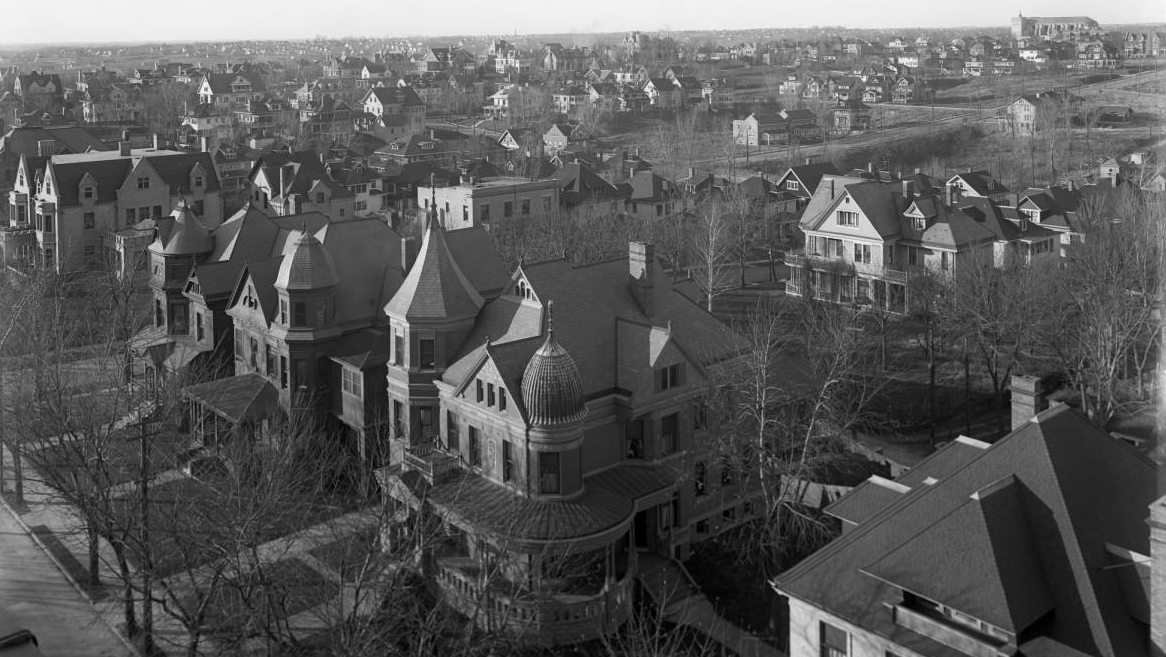
With its roots in the mid-1880s, the new Gold Coast was the nouveau riche flexing their muscle. Located in far West Omaha, its boundaries were originally flexible, and included addresses from North 36th Street west to North 40th, and from Jones Street north to Cuming. The Gold Coast contains two distinct neighborhood within its boundaries: the Blackstone neighborhood, which was originally called West Farnam; and the Cathedral neighborhood, which was originally called Park Place. Note that since this is my North Omaha History website, I’ll only be writing about the Cathedral neighborhood in the Gold Coast. I include everything north of Dodge in my research and writing.
Of course, in those early years, as soon as someone said they lived in the Gold Coast, everyone knew that their streets were paved in gold.
In the 1880s, Dr. Sam Mercer ran his electric streetcar to his Walnut Hill neighborhood. This gave downtown businessmen an easy way to build new homes far away from the stress and strain of their jobs. Important people like Edward Nash, George Joslyn, Constantine Smyth, R.B. Bush, and Ephraim Dixon were among the most predominant businessmen in the new Gold Coast.
These high brow families hired Omaha’s finest architects to custom design their homes. These men’s names ring through the ears of Omaha’s historical preservationists, with sought-after professionals leaving their signatures on the area. They included Thomas Rogers Kimball, Dufrene and Medelssohn, Jacob Nachtigall, John and Alan McDonald, Henry Ives Cobb, F.A. Henninger, and Henry Lawrie.
As the elite families of Omaha built the grand elements of the area, they originally kept large estates and a lot of property. However, by 1910 the city was encroaching on the Gold Coast, and more lots were sold to fill in the blocks between the mansions. Since Omaha was a lot more economically integrated during this era, middle income professionals built smaller fine homes for themselves right next to the mansions. Finely appointed apartment buildings came in, and the area took on an all together neighborly feel. It was a high address to live at. Also, commercial buildings, hotels, schools, and religious buildings sprang up along the major streets, and then the secondary streets. Blackstone and Cathedral became neighborhoods unto their own, and the area matured.
The Wealthy Mingle
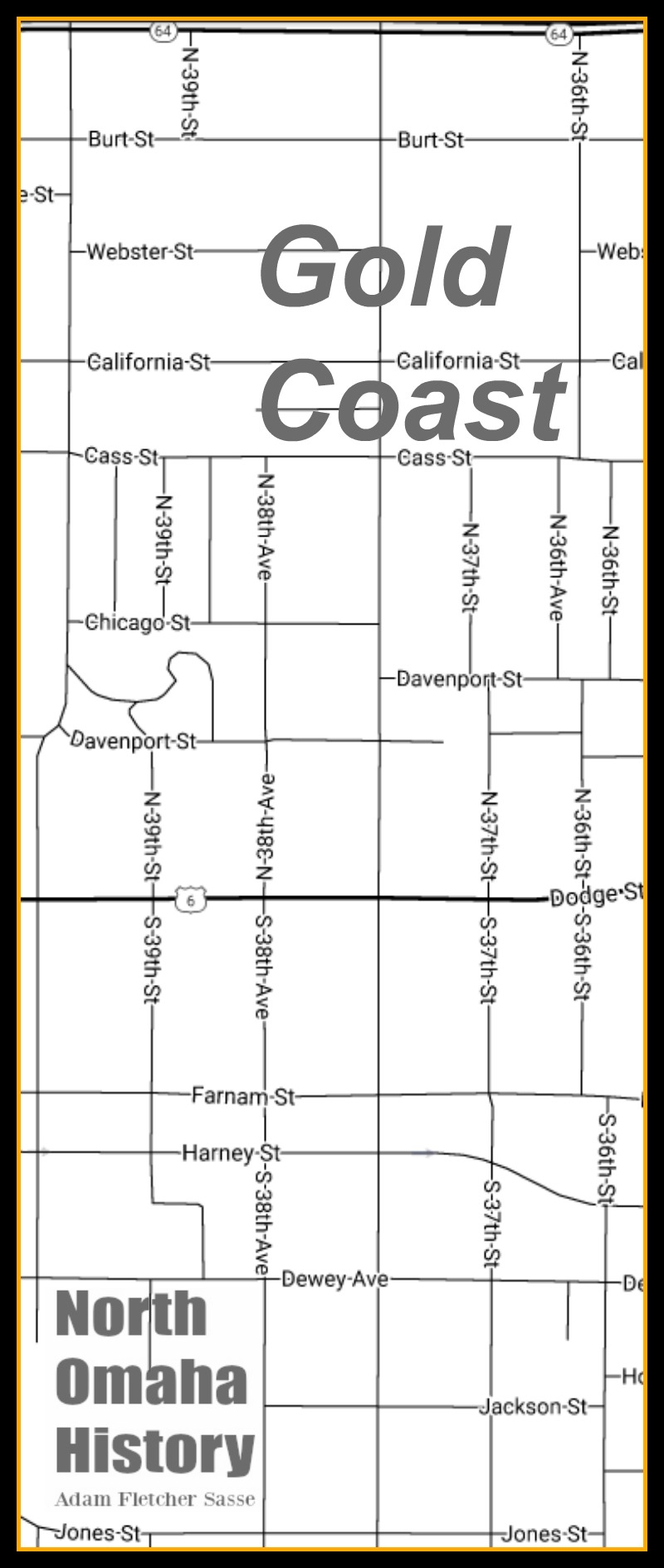
Dinners, dances, weddings and socials of all kinds filled the area from early on. The wealthy loved the altering house styles, including English, Mediterranean, Colonial Revival, Georgian, Gothic, Tudor and Romanesque designs, as well as eclectic homes that had a lot of variation. Houses had all kinds of spectacular features, including three- and four-story towers, moats, and spectacular flower gardens on the outsides. Yards were often ringed with iron fencing, and served by regal driveways where coaches and drivers could gracefully haul their charges to their next locations.
The insides of these homes with even more elaborate furnishings, all reflecting the opulence and splendor of the Gilded Age. Woods from exotic places; fine, handmade woodworking; elaborate stained and leaded glass windows; beautiful silk wall tapestries; Tiffany lamp fixtures; and exquisite rugs filled these homes. In an average when a fine home had six or ten rooms in two stories, these mansions had 20 and 30 rooms in three and four stories. There all had large coach houses, often two stories tall with enough room to accomodate their horses, coaches and buggies, and later, multiple cars.
Social gatherings were one way the wealthy established their lot in Omaha. Others included sending them to nearby elite schools such as Duchesne Academy, a Catholic high school; and the then-Brownell Hall, a Presbyterian boarding school.
In their religious and cultural lives, the Gold Coast neighbors also fostered many opportunities to interact. Of course, the neighborhood became a stronghold for the wealthy Catholics who clustered close to their massive new Cathedral. Saint Barnabas Episcopal Church was built
Cathedral Neighborhood Landmarks

The Cathedral neighborhood was originally called Park Place. That changed when the Archdiocese of Omaha diocese started constructed Thomas Rogers Kimball’s landmark, the Saint Cecilia’s Cathedral. (Reminder: I won’t be covering the Blackstone / West Farnam neighborhood here because its south of Dodge.) Started in 1905, it took more than 50 years to finish the Cathedral. However, its exquisite Spanish Revival is the masterpiece, and more than a century later it is clearly the most significant architecture in the entire city of Omaha. The dual bell towers rise above the southern part of North Omaha, and are clear beacons for this entire region of the city.
The Duchesne Academy started as the Sacred Heart Convent in 1882. Located on the corner of 36th & Burt Streets, the convent In 1904, the Sisters of Mercy began running the school. The 1913 Easter Sunday Tornado nearly destroyed the building. In 1915, the school added college courses and renamed itself Duchesne College and Convent of the Sacred Heart. The college closed in 1968 and the institution was renamed the Duchesne Academy. It continues operating today.
The first soldier from Omaha killed in World War I was named Jarvis Offutt. He was the son of Charles Offutt, who built the large, beautiful Offutt House at 140 North 39th Street in 1894. The Offutt Air Force Base was named in honor of the younger Offutt. With 15 rooms covering more than 10,000 square feet, there are five fireplaces, fine woodwork and many other exquisite details make this an outstanding feature of the neighborhood.
John Latenser was one of Omaha’s preeminent architects, and when the city asked him to design a public school for the Gold Coast neighborhood, he knew what to do. The Saunders School was designed as a beautiful and distinguished learning space. Developing a strong, obvious style just for his later public designs, Latenser’s building was built in 1899. In 1984, it was converted to apartments, and today, there are 23 units there.
Lynhurst was built to mimic the robber baron palaces on the East Coast, and to echo the grand castles of Scotland. George and Sarah Joslyn hired premier Omaha architect John McDonald to design their home, and he did it spectacularly. Today was call it Joslyn Castle. He used Vermont limestone to make its 35 rooms, with Spanish mahogany covering the walls, ceilings and main entryway. Exotic wood is throughout the entire castle, and painted ceilings offer fascinating glimpses into the priorities of rich people. The massive stone towers of the castle look onto fanciful lawns, and a long drive leads to the entryway. After years of use as the district offices for Omaha Public Schools, then the State of Nebraska, today its owned by the Joslyn Castle Trust, and is lovingly maintained for all kinds of uses.
When an architect designs his own home, you can expect that its excellent. John McDonald’s House, located at 515 North 38th Street, was built in 1911. A modestly sized house, it has many elegant features, including a green clay tile roof, a small pavillion style porch, and a striking parapet on the brick exterior, which is also rimmed with limestone trim. Mahogany paneling covers the public rooms, and beamed ceilings hold the living and dining rooms intact.
One of the most exciting houses in the Gold Coast is the Forster House. Built in 1916 at 3712 Davenport, the Forster is Omaha’s only true Prairie School architectural style home in the city. Its unique stylings include a tall façade with windows that look like ribbons, along with asymmetrical appearances on the outside that pop and push the house from the front to the back of the lot where it sits.
There are many more fine homes, churches and other buildings in the Cathedral neighborhood, and all of the Gold Coast—check out “Adam’s Gold Coast Tour” below for locations.
Demolished Houses

Given that there are 30 blocks in the Gold Coast neighborhood, and that Omaha has an addiction to bulldozers and newness, it should come as no surprise to learn that even in the super-well-preserved Gold Coast neighborhood, many jewels have been lost.
One of the finest homes that is lost was called the Nash Mansion, and was located at 3806 Burt Street. Built in 1887 in the Queen Anne style, the Nash Mansion belonged to the leader of the American Smelting and Refining Company, that evil corporation that mercilessly poisoned generations of Omahans and eventually, as the company devoured its competitors, people around the world. His Gold Coast home was two and a half stories tall, and featured a three story tower. It was demolished in 1933.
His son, Louis Nash, built a large, fine home across the street at 3807 Burt Street that still stands proudly and contributes to the Gold Coast Historic District.
Anti-Crowding Car Society
People who lived in Omaha thought the Park Place neighborhood was way far out from Omaha. Traveling so far out everyday would have made today’s Cathedral neighborhood off-limits to even the wealthiest if they had to use their carriages everyday for their commute.
Dr. Sam Mercer made the Gold Coast neighborhood possible when he paid for an electric streetcar to run up Cuming Street to the Walnut Hill neighborhood where he was selling lots. Suddenly, downtown company owners, politicians and other wealthy, elite men could easily travel to and from their offices and factories. Their housewives could hop a streetcar and ride in comfort to all of Omaha’s best shops, social gatherings and other activities. The whole family could move in style if need be.
However, it didn’t all stay happy forever.
The growing bloom of the Gold Coast neighborhood was in full swing by the 1898 Trans-Mississippi Exposition. Mansions abounded in the West Farnam and Park Place neighborhoods, and everyone was living large. During the Expo, the wealthy residents of the Gold Coast would hop onto a larger streetcar than had ever been used on Walnut Hill. They were delighted to have so many seats, and were happy with having so many more streetcars running to and from their neighborhood.
However, when the Expo ended the streetcar company was forced to dial back service to the neighborhood. The company’s leader, Gurdon Wattles, lived in the Blackstone neighborhood. That didn’t stop him from yanking cars away though! Starting in 1898, the Society’s members pledged themselves “to resist by force any effort to crowd more than a comfortable number into the cars when any of the members are present.”
Late that year, the members started gathering in large groups at the Walnut Hill stops for the streetcar line. Members from the Gold Coast neighborhood joined in, and a polite ruckus was made. This happened several other times, and then legal action was threatened.
Within a year, Wattles and his Omaha & Council Bluffs Streetcar Company gave into demands and returned larger streetcars to the neighborhood.
Changed Neighborhoods
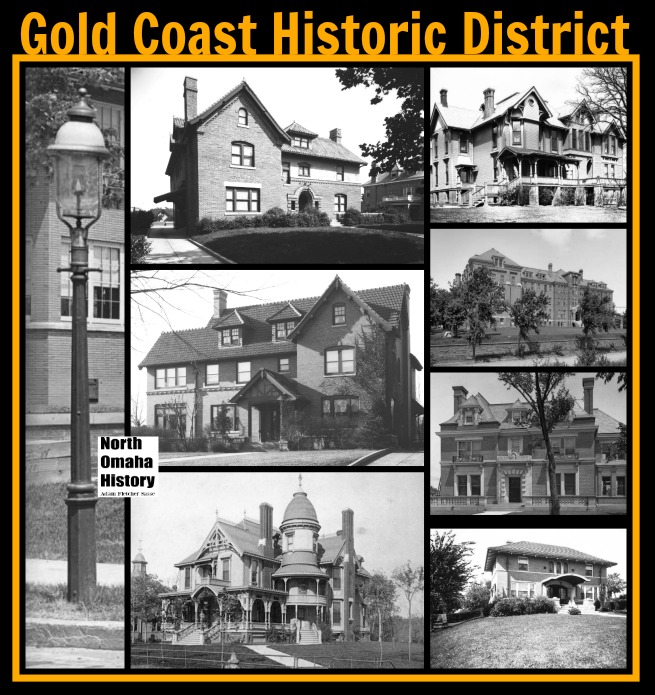
That might have been the watershed moment of the Gold Coast neighborhood. After the turn of the century, Omaha’s elite continued their march westward past the Cathedral neighborhood and towards the Happy Hallow, Country Club, Fairacres, and beyond. Unlike other formerly wealthy North Omaha neighborhoods like Bemis Park, Kounze Place and Walnut Hill, the Gold Coast never experienced the mass overturn of single family dwellings becoming apartments. Along with that, many of the streets and sidewalks, street lamps and curbs maintained their historical luster, as well as the lawns and gardens that defined the neighborhood.
In 1997, the Cathedral and Blackstone neighborhoods were placed on the National Register of Historic Places together as the Gold Coast Historic District. This designation has afforded the area a distinct place in Omaha’s historic preservation movement, as residents and an active neighborhood association have sought to leverage their status against covetous developers who would just as soon bulldoze the old mansions to make room for trendy new apartment buildings. Continuously and successfully lobbying for the landmarks in their care, these neighborhoods are a role model for how to rally and overcome against Omaha’s monstrous development desires.
Keep going Gold Coast! Maybe someday we’ll pull together a group of history advocates from the rest of North Omaha so you can help every historic neighborhood be as successful as you are!
Adam’s Gold Coast Tour
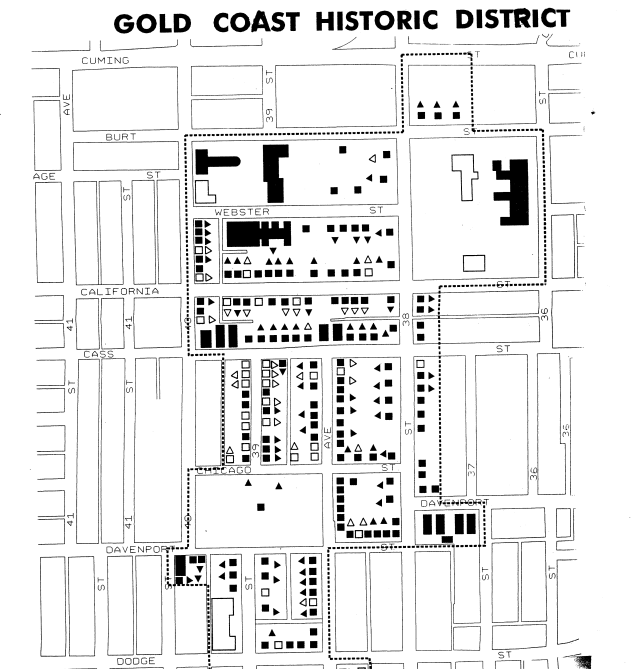
Following are the names historically associated with each location, as well as their address and the year they were built. There are 352 different structures that contribute to the Gold Coast Historic District, including hundreds south of Dodge, so this is just a tour of the buildings I’m interested in. These homes are all included in the City of Omaha’s 1980 designation of the West Central / Cathedral Omaha Landmark Heritage Distric. If there’s something you think I’m missing, please leave it in the comments section below.
- Love House, 116 N. 38th Ave. (1899)
- Flack House, 322 N. 38th St. (1921)
- Lawrence House, 402 N. 38th Street (1907)
- Ephraim W. Dixon House, 426 N. 38th St.
- Billings House, 431 N. 38th St. (1907)
- Hynes House, 432 N.38th St.
- Langdon House is found at 503 N. 38th St. (1928)
- John McDonald House, 515 N. 38th St. (1911)
- Henninger House, 518 S. 38th St.
- Doyle House, 520 N. 38th St. (1900)
- Reinhold B. Busch House, 604 N.38th St. (1908)
- Barmettler Mansion, 622 N. 38th St. (1921)
- Smythe Mansion, 710 N. 38th St. (1906)
- T.C. Havens House, 101 N. 39th St.
- Offutt House, 140 N. 39th St. (1898)
- Baldridge House, l4l N. 39th St.
- Arthur English House, 521 N. 39th St.
- Reinhold B. Busch House, 604 N. 39th St.
- St. Barnabas Episcopal Church, 129 N. 40th St.
- Carberry Apartments, 303 N. 40th St.
- G.F. Epeneter House, 502 N. 40th St.
- Saint Cecilia Cathedral, 701 N. 40th St. (1905 – 1959)
- Saunders School, 415 N. 41st Ave.
- Academy of the Sacred Heart / Duchesne Academy, 3601 Burt St. (1882)
- Delavetga House, 3835 California St. (1887)
- Seaman House, 3863 California (1888)
- Buck House, 3820 Chicago St. (1889)
- Forster House, 3712 Davenport St.
- Joslyn Castle, 3902 Davenport St.
- St. Cecilia’s Grade School, 3845 Webster St. (1907)
- St. Cecilia’s Convent, 3841 Webster St. (1927)
Elsewhere Online
BONUS PICS!
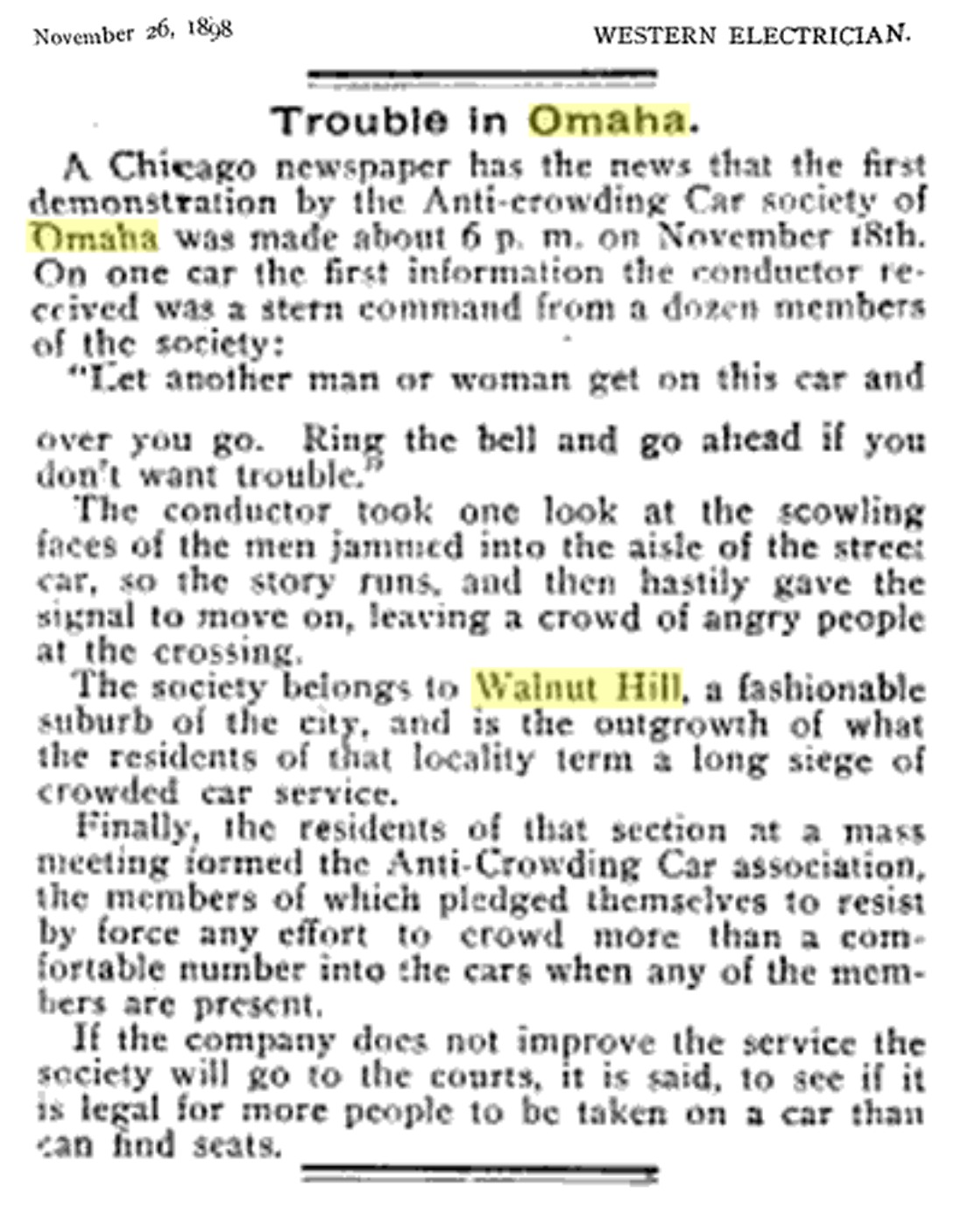
This is a nice, comprehensive video tour of homes in the Gold Coast neighborhood.


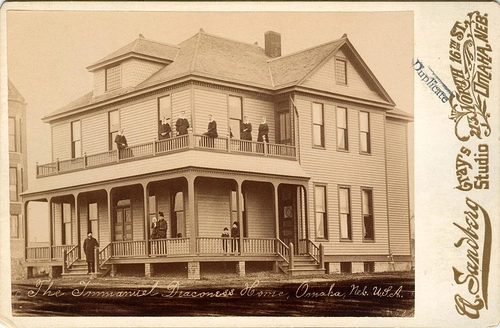

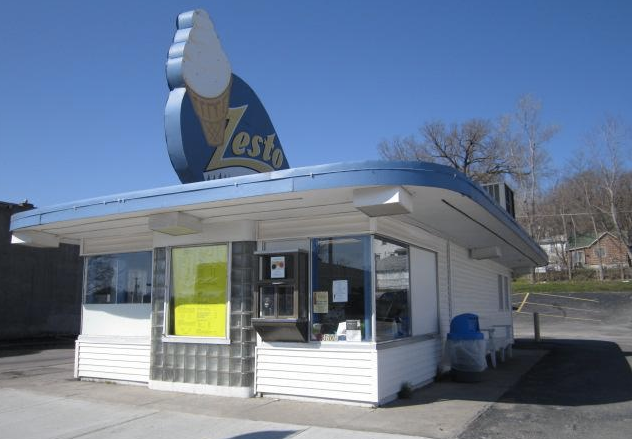
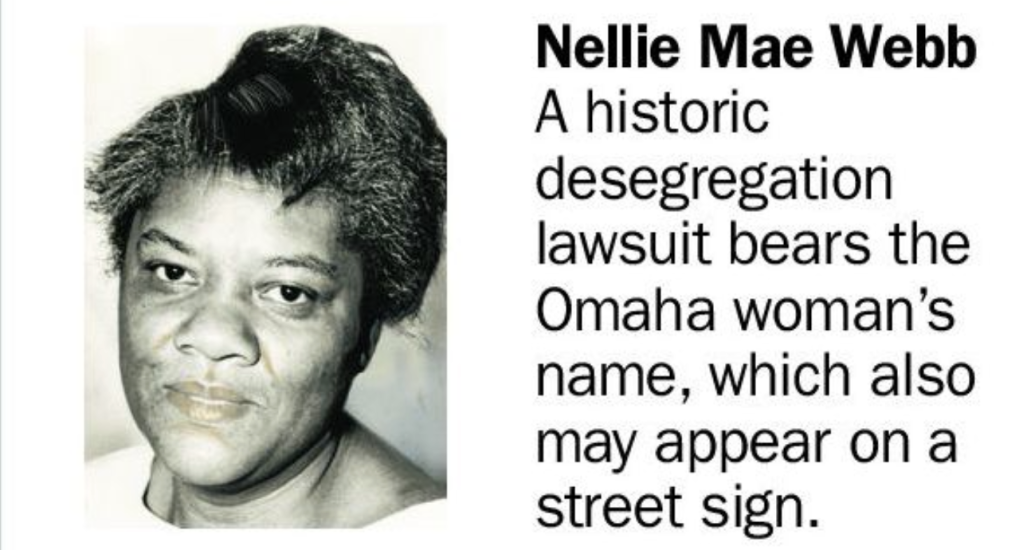
Leave a comment